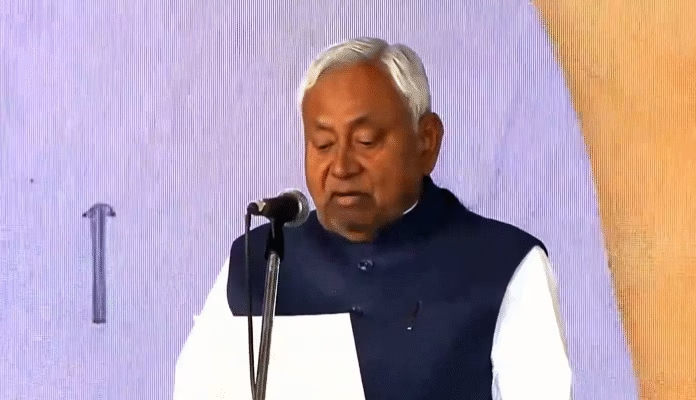
 by Sanjay Saxena
by Sanjay Saxena
Lucknow: Eleven years ago, when Narendra Modi entered national politics during the 2014 Lok Sabha elections, the Gujarat Model dominated the national discourse. Gujarat was showcased as the ideal state for industry, investment, infrastructure, and uninterrupted power supply. “Development is the solution to all problems” was the political mantra of that era.
But the politics of 2025 is speaking a different language. Public expectations have changed. The definition of governance has changed. And now the BJP is projecting Yogi Adityanath’s Uttar Pradesh Model — the Yogi Model — far more aggressively than the original Gujarat Model. The shift reflects a clear preference among citizens for security, strict governance, and decisive action.
The Rise of the Yogi Model
Since taking charge as UP Chief Minister in 2017, Yogi Adityanath has rewritten administrative norms. Declaring law and order as the first pillar of development, he introduced a governance style rooted in fearlessness, discipline, and zero tolerance for crime. The bulldozer became the symbol of his crackdown on mafia networks and illegal constructions — earning him the now-famous moniker “Bulldozer Baba.”
Where the Gujarat Model focused on industrial growth and investment, the Yogi Model added new dimensions: restoring public safety, eliminating mafia power structures, and delivering quick, visible action. For many citizens, development is now inseparable from security. People believe investment and progress can thrive only when rule of law prevails. This sentiment has made the Yogi Model both distinct and widely acceptable.
How BJP Is Exporting ‘Yogi-Style Governance’ to Other States
The BJP has strategically amplified this model during elections across India. In Uttarakhand, Madhya Pradesh, Rajasthan, and Haryana, Yogi Adityanath was projected as a “one-man enforcement unit.” Phrases such as “bulldozer chalega” and “mafia-mukt sarkar” have become common in BJP campaign speeches.
The impact is national:
-
In Assam and Manipur, “Yogi-style action” is referenced in government briefings.
-
Maharashtra’s Eknath Shinde government has openly said its actions against illegal structures draw inspiration from UP.
-
From Delhi to Karnataka, anti-mafia bulldozer drives have become routine in BJP-ruled states.
Yogi Adityanath has effectively turned administrative strictness into a new political brand for the BJP.
The Public Connect: Why the Model Works
The Yogi Model is closely tied to public sentiment. People see quick action against criminals, bulldozed illegal properties, and swift arrests as tangible justice. It gives them a sense that governance is not limited to files and announcements, but is visible on the ground.
Economically too, UP has gained from this perception. The state is now among India’s top investment destinations, attracting massive commitments during the Global Investors Summit. International investors increasingly see UP as a stable, law-governed, and safe state to operate in.
Prime Minister Modi himself has repeatedly praised the Yogi government for turning strong governance into a catalyst for economic growth.
A New Political Narrative: Development vs Crime
The Yogi Model has helped the BJP craft a fresh political binary — development versus crime. This simplifies its pitch and gives the party moral high ground. When the opposition highlights issues such as unemployment or inflation, the BJP counters by showcasing UP as an example of crime-free governance and public-order driven development.
This image has also elevated Yogi Adityanath within the BJP, positioning him as the party’s most influential leader after Narendra Modi.
Beyond Borders: South Asia Discusses the Yogi Model
The model has sparked conversations outside India as well. Analysts in Nepal and Sri Lanka have pointed out the need for a governance approach as firm as Yogi Adityanath’s. Some provincial leaders in Nepal have suggested adopting “Yogi-like measures” to tackle corruption. In Bangladesh, bulldozer actions often trend on social media.
Supporters believe the Yogi Model restores public trust in law enforcement. Critics argue that bulldozer action must not bypass legal procedures. But even they admit that Yogi’s approach has fundamentally shifted public expectations from governance.
Can the Yogi Model Become a National Template?
A debate is underway within the BJP on how far this model can be replicated nationally. Elements of Yogi’s approach — strict enforcement combined with welfare — are already visible in several central policies. The Modi-Yogi combination is emerging as a powerful political axis: Modi as the architect of India’s global image, and Yogi as the symbol of grassroots governance and domestic security.
In every state the BJP enters for election, Yogi Adityanath’s rallies are now among the most in-demand. His fiery slogans — “mafia par bulldozer chalega” — energize crowds instantly. For many, Yogi represents the promise of a fear-free society.
A Governance Style Turning Into a Political Ideology
The Yogi Model has now evolved from an administrative style into a full-fledged political ideology — one that positions security and development as inseparable. As India’s political narrative continues to shift, Yogi Adityanath’s governance style is shaping the BJP’s identity across states, creating a new template for power, performance, and public trust.



